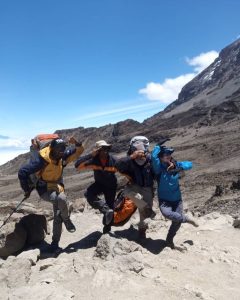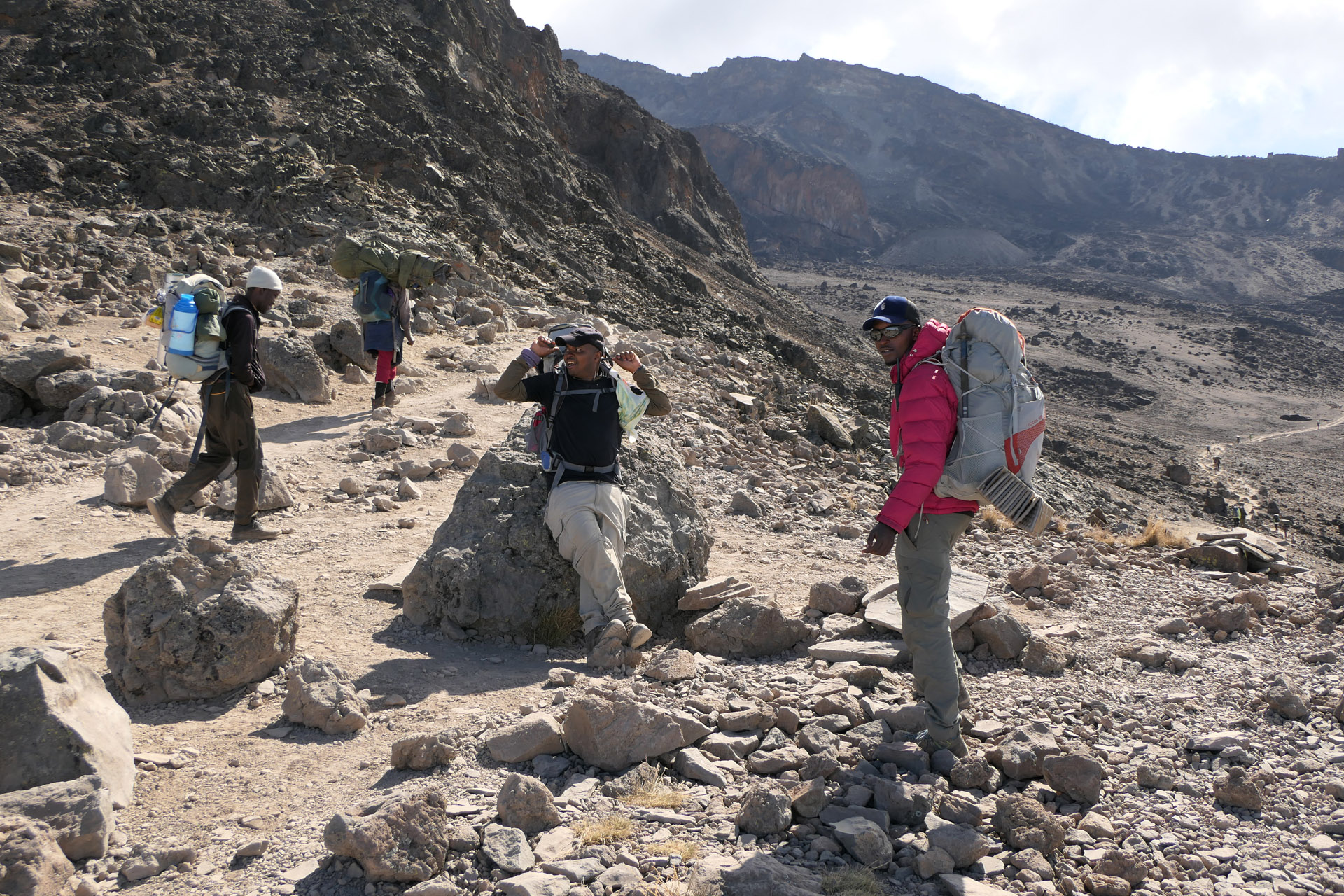Training to Climb Mount Kilimanjaro
Fitness & training to climb Mount Kilimanjaro
Without doubt, climbing Kilimanjaro is a huge challenge that requires strength, stamina, serious determination and a very good level of fitness. You’ll have long days trekking at high altitude and a great deal of physical effort is required.
It is essential that you prepare your cardiovascular system, muscles and joints for your Kilimanjaro trekking adventure.
Kilimanjaro training recommendations
We suggest that you embark on a training programme at least two months before your trek start date. Strong, conditioned legs will make it easier to walk uphill and downhill for sustained periods of time and general cardio fitness will help your body function efficiently with less oxygen.
Running, swimming and cardio workouts will certainly help your fitness levels, however the best exercise that you can do to prepare for your trek is regular hiking.
 Recommended hiking schedule
Recommended hiking schedule
Hike as much as possible on walking trails on hills or mountains close to where you live, as this will help you to prepare for your ascent of Mount Kilimanjaro. Start with short hikes at a slow and steady pace, then gradually increase the duration and pace of your hikes to improve fitness.
At the start of your training, you should carry an empty day pack on your hikes and then gradually add weight to it as you progress (whilst climbing Kilimanjaro, you’ll most likely carry between six to eight kilograms in your day pack, including water, snacks, camera, extra layers of clothing, lip balm, sunscreen, hand gel, sunglasses, personal first aid kit, wet wipes etc.).
As your training progresses, you should increase your training to three hikes per week and each hike should be between four to six hours with moderate elevation changes, whilst carrying an eight-kilogram day pack.
You should complete your longest hikes two to four weeks before your departure and during the final two weeks prior to your Kilimanjaro trek, you should gradually stop your training so that your body has time to recover.
It is important that during your Kilimanjaro training you wear the boots that you intend to climb with, as this will help to prevent blisters during your trek.
In addition to hiking, you can supplement your training with exercises such as running or cycling, which will help to increase your aerobic capacity. Lunges are also a great way to strengthen your glutes, quads, hamstrings and calves, and you’ll feel the benefit whilst on your trek.
Recommended gym schedule
If you do not have access to hiking trails, we recommend that you train at your local gym and use a step machine, which simulates the effects of climbing an endless staircase and is a great way to improve your fitness, strength and endurance.
As with hiking training, we recommend that you start with short sessions on the step machine and gradually build up your time, until you’re able to do one to two hours whilst carrying an eight-kilogram day pack.
Just remember that if you’re training on machines at the gym, you’ll be wearing trainers, so it is important that you also go for long walks in your hiking boots to ensure that you break them in.
It is imperative that you have complete confidence in your physical ability to attempt a Mount Kilimanjaro trek, and even if you have an excellent level of fitness, you might still find it tough, depending on how well you acclimatize to the high altitudes.




